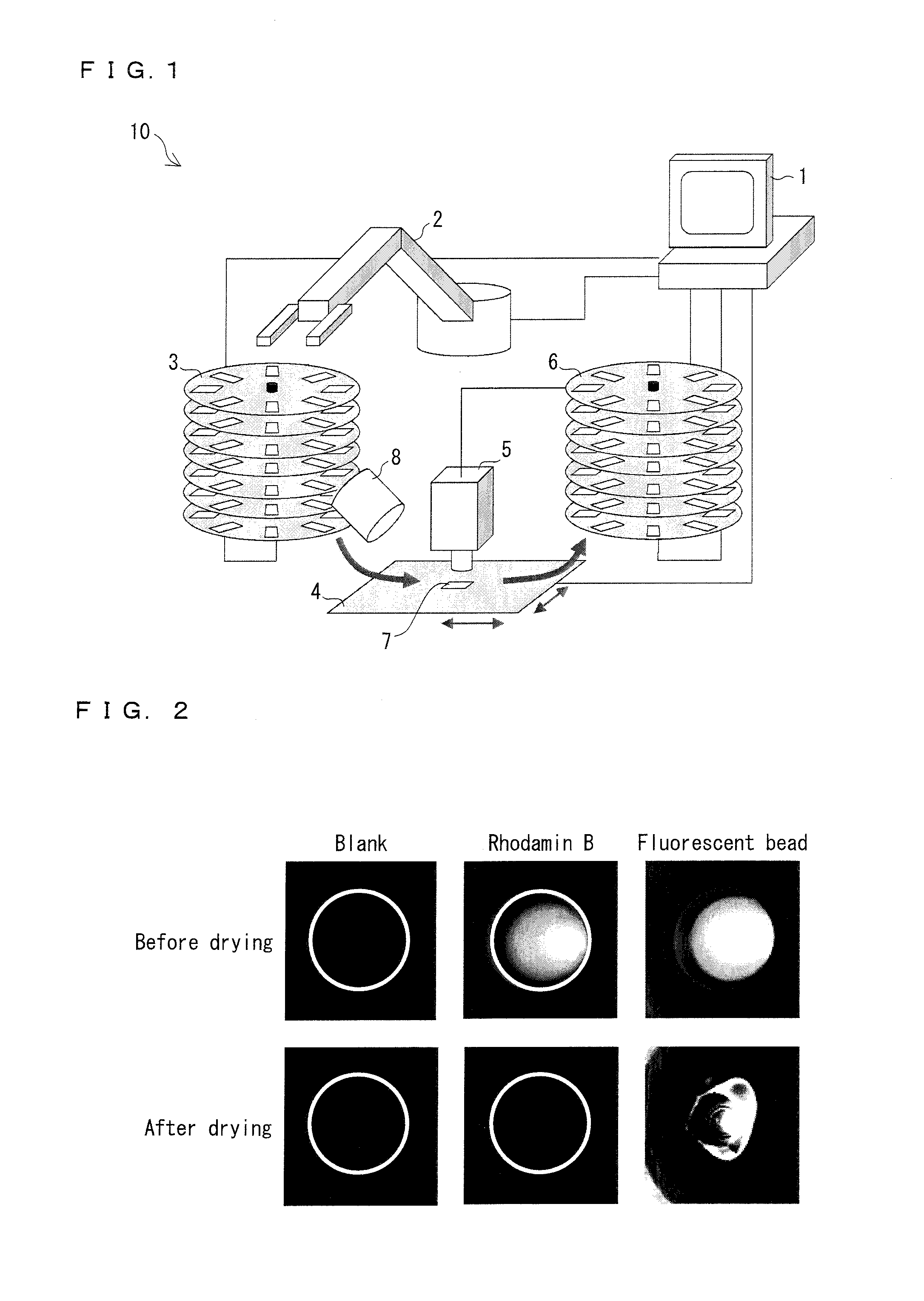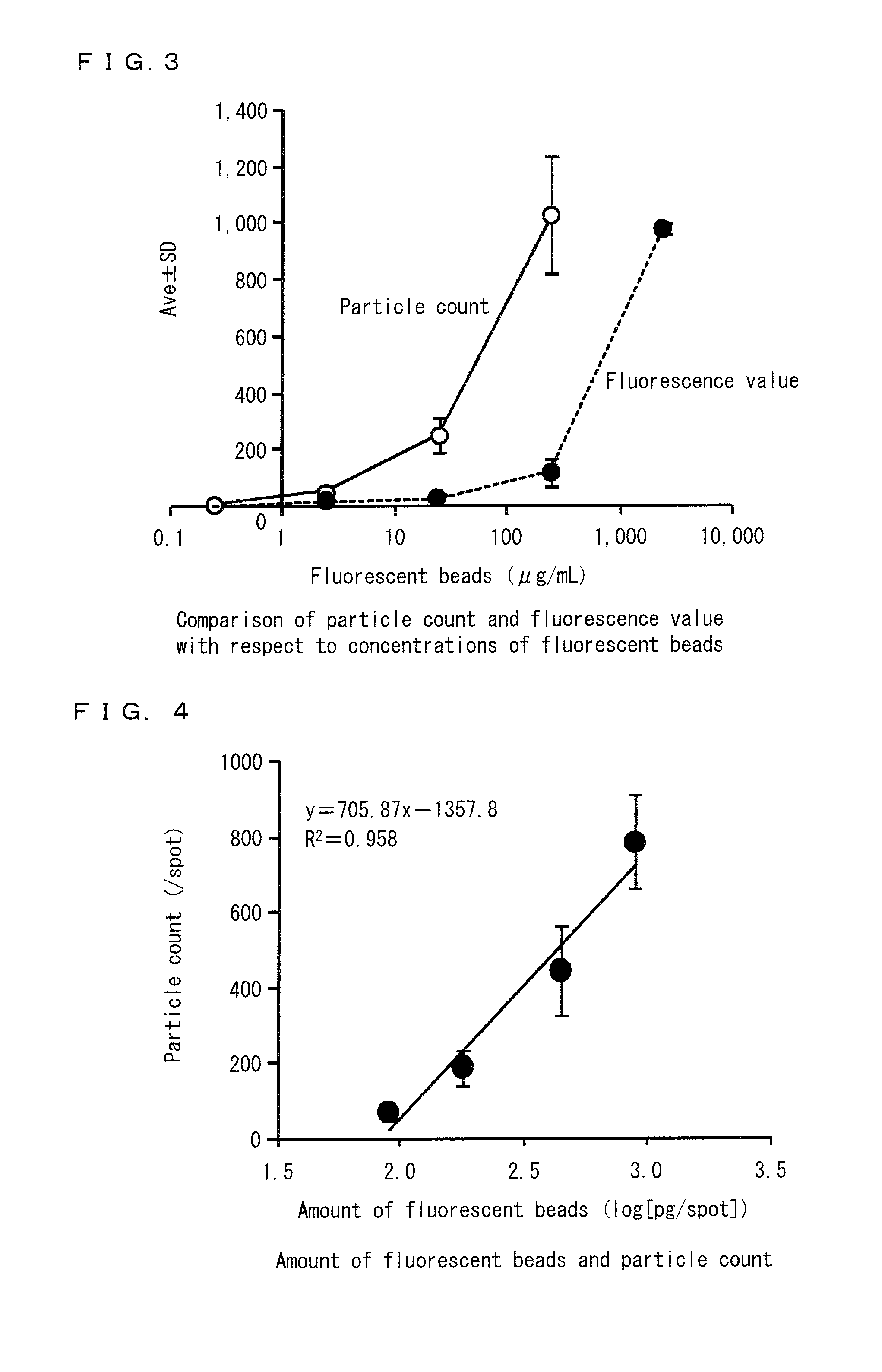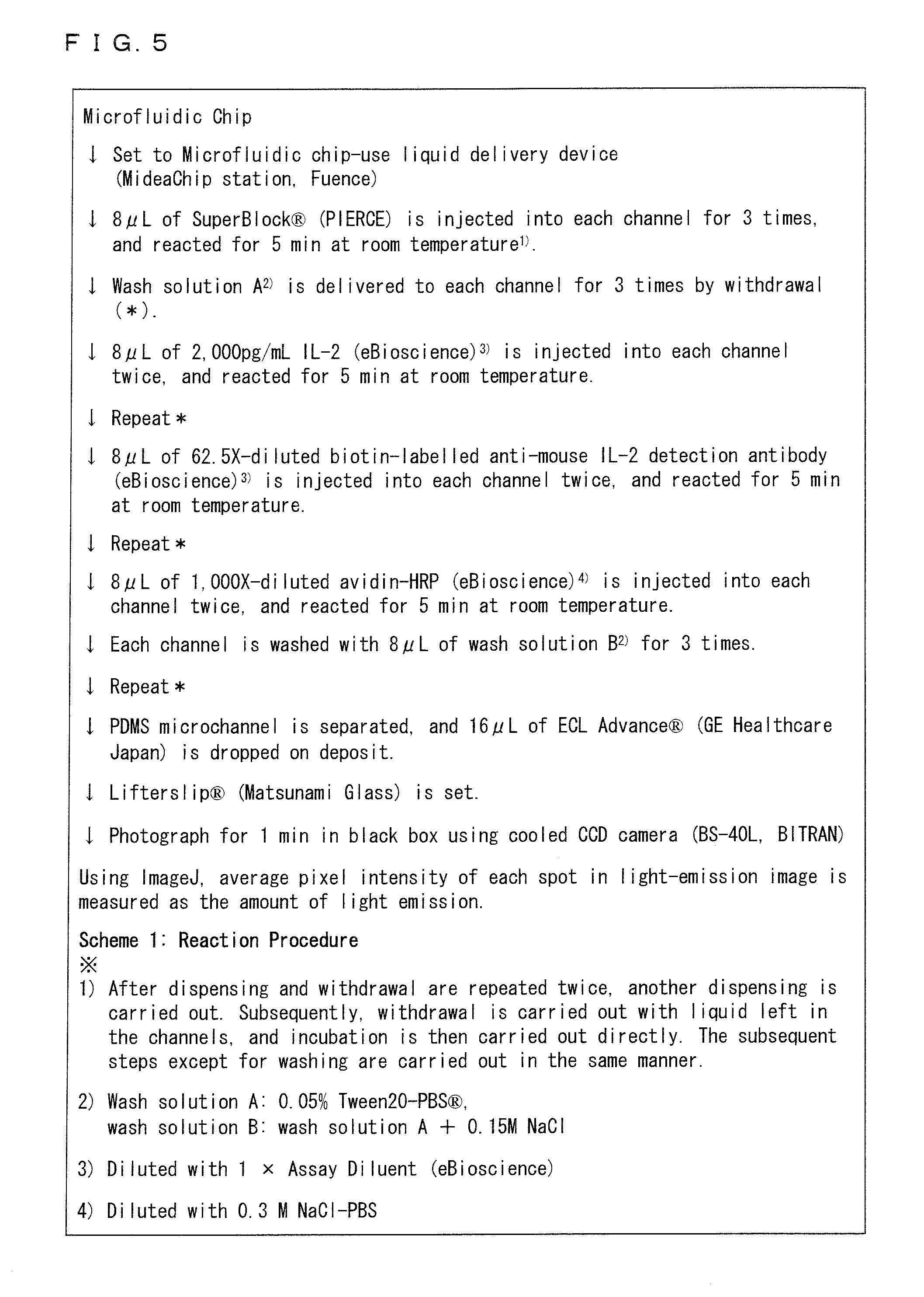Method for estimating the amount of immobilized probes and use thereof
a technology of immobilized probes and methods, applied in the field of methods for estimating the amount of immobilized probes, can solve the problems of high reproducibility of above methods, difficult to form spots with high reproducibility, etc., and achieve the effect of high degree of accuracy
- Summary
- Abstract
- Description
- Claims
- Application Information
AI Technical Summary
Benefits of technology
Problems solved by technology
Method used
Image
Examples
first embodiment
[0034](1) A Method for Estimating the Amount of Immobilized Probes
[0035]A method for estimating the amount of immobilized probes according to the present invention includes the successive steps of: providing a sample on a substrate to form one or more spots of the sample on the substrate, the sample containing particulate substances and probes in a predetermined ratio, the probes being reactive with a predetermined target (referred to as a step A); measuring the number of the particulate substances contained in at least one of the spots (referred to as a step B); and estimating the amount of the probes contained in the at least one of the spots from the thus measured number of the particulate substances (referred to as a step C).
[0036](Probes and Target)
[0037]In the present invention, probes refer to substances that are reactive specifically with a predetermined target. Specific examples of the probes include: a nucleic acid sequence, such as DNA sequence or RNA sequence; a protein ...
reference example 1
Change in Fluorescence Due to Drying
[0137]One μL of an aqueous solution containing rhodamine B (Wako) (75 μg / mL), 1 μL of water containing 0.25% by weight of fluorescent beads (Latex beads, carboxylate-modified polystyrene, fluorescent yellow-green (mean particle size of 0.03 μm, aqueous suspension) manufactured by Sigma-Aldrich Corporation), and 1 μL of blank (water) were respectively dropped into wells of a 96-well plate, after which fluorescence observation of spots formed in the wells was made under a fluorescence microscope (BX51 WI) manufactured by Olympus Corporation. Then, the spots were allowed to stand until dried, after which fluorescence observation of the spots was made again. As shown in FIG. 2, the results of the fluorescence observation were as follows. In the case of rhodamine B, a remarkable fluorescence decrease caused by drying was observed. On the other hand, in the case of the fluorescent beads, sufficient fluorescence was observed even in the dried state. From...
reference example 2
Comparison of the Fluorescence Value and the Particle Count with Respect to Concentrations of the Fluorescent Beads
[0138]A polydimethylsiloxane (PDMS) microchannel with 16 fine channels each having a width of 250 μm and a depth of 115 μm was prepared. Then, fluorescent beads (Latex beads, carboxylate-modified polystyrene, fluorescent orange (mean particle size of 1 μm, aqueous suspension) manufactured by Sigma-Aldrich Corporation) were diluted with water to prepare five dilute aqueous suspensions. The five dilute aqueous suspensions thus prepared decreased in turn in concentration by a factor of 10 and are in concentrations from 250 ng / mL to 2500 μg / mL. The five dilute aqueous suspensions of the fluorescent beads in five concentrations were each injected into three channels of the microchannel through a microfluidic chip-use liquid delivery device (manufactured by Fuence Co., Ltd.). Into one remaining channel, water was poured as a blank.
[0139]Then, using a 1×-magnification fluoresc...
PUM
| Property | Measurement | Unit |
|---|---|---|
| diameter | aaaaa | aaaaa |
| diameter | aaaaa | aaaaa |
| particle size | aaaaa | aaaaa |
Abstract
Description
Claims
Application Information
 Login to View More
Login to View More - R&D
- Intellectual Property
- Life Sciences
- Materials
- Tech Scout
- Unparalleled Data Quality
- Higher Quality Content
- 60% Fewer Hallucinations
Browse by: Latest US Patents, China's latest patents, Technical Efficacy Thesaurus, Application Domain, Technology Topic, Popular Technical Reports.
© 2025 PatSnap. All rights reserved.Legal|Privacy policy|Modern Slavery Act Transparency Statement|Sitemap|About US| Contact US: help@patsnap.com



